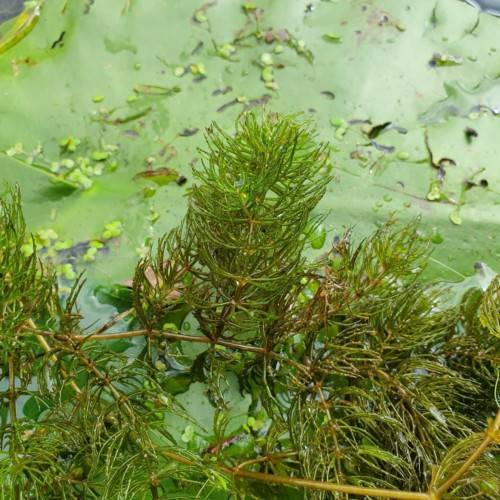
Southern Prickly Hornwort
Ceratophyllum muricatum subsp. australe
Watering:
Minimal
Hardiness Zone:
3
Flowers:
Flowers
Sun:
full sun,part shade
Growth Rate:
High
Drought Tolerant:
Yes
Salt Tolerant:
Yes
Care Level:
Easy
watering
Common Hornwort (Ceratophyllum demersum) should generally be watered every few days, or as often as water levels in the tank allow. As Ceratophyllum demersum is a submerged plant, make sure to reduce the amount of water you add if the water level appears to be too high. This species prefers to be consistently moist, but not waterlogged. Adjust water levels to approximately 3-5 inches, and refill as needed. When watering, make sure to find a balance between not enough water (which can cause the plant to dry up and die) and too much water (which can lead to mold and root rot). In addition, when water levels are kept too low, oxygen levels decrease in the tank and can lead to poor plant health.
sunlight
Common Hornwort (Ceratophyllum demersum) prefers indirect full-intensity sunlight or part-shade. The best amount of sun exposure is around 3 to 4 hours of direct sunlight per day. During the peak of summer, however, avoid direct intense sunlight as the leaves may scorch and wilt due to high heat. This plant species does not fare well when left in direct sun for extended periods of time.
pruning
Common Hornwort (Ceratophyllum demersum) does not require frequent or intense pruning. In fact, light pruning is recommended only once or twice a year. If pruning is necessary, it should be done in early spring before new growth emerges, or in late fall before colder temperatures set in. During pruning, it is best to leave some of the foliage intact for protection, only removing the larger outer branches of the plant. This will help keep the plant healthy and help encourage new growth.
